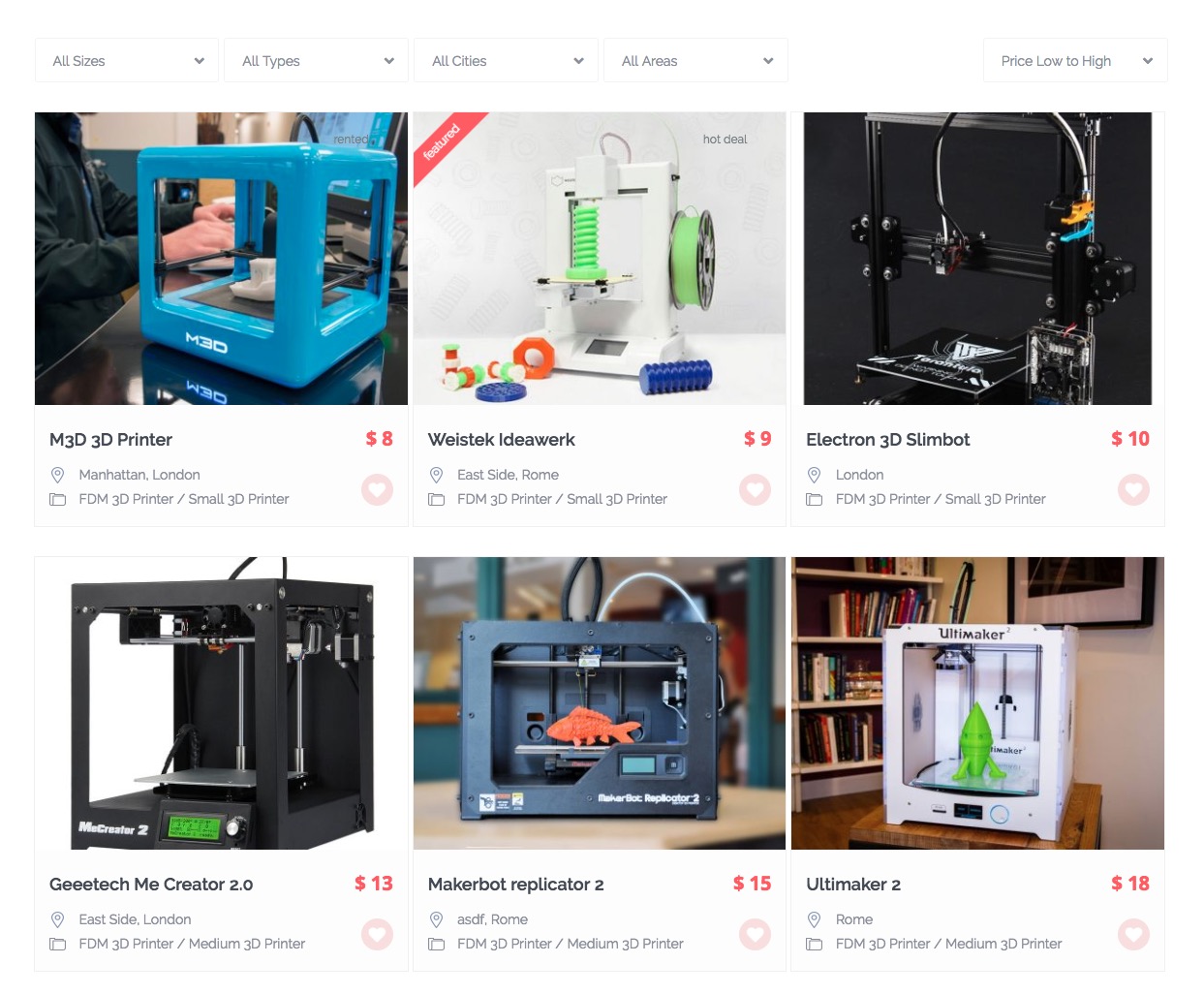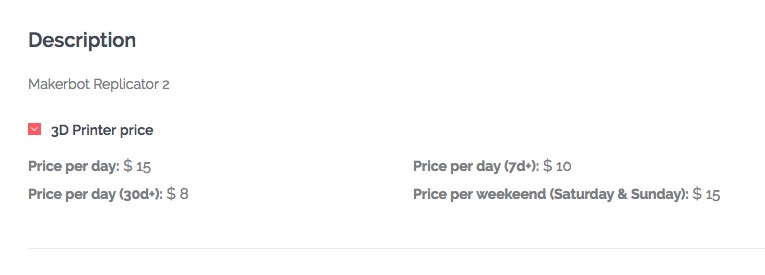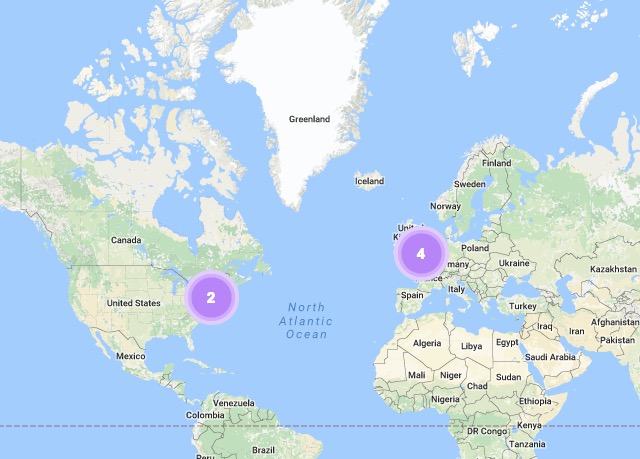
A new sharing service proposes a method of renting remote 3D printers.
Threedigo, a new venture by founder Sebastian Rueda is a bit of a different twist on shareable 3D printers. While there are several crowd-networks for 3D printers available, virtually all of them are based on the “Per Print” philosophy. Threedigo is a bit different in that you are renting a machine for a daily rate.
For this approach, a client would require some basic knowledge of the machines displayed in order to select the machine most appropriate for their print (or prints, I suppose).
The site permits you to search through listings to identify the “right” printer for you, and has a map to show the physical location of the device. Location is important because in this system the renter physically takes possession of the rented device.
Why? Because if the device owner was to perform the operation, the pricing would be quite different. It would have to account for the labor delivered by the operator – and that could vary considerably depending on what is being printed.
Also, this approach simplifies the issue of material choice. The renter doesn’t have to be concerned whether the device owner has this material or that material, simply because the renter will provide all that themselves.
Threedigo provides the linkage between renter and owner, and takes a 15% cut of the fees.
Fees are daily, 7 days, 8 days and 30 days, with declining rates as the duration increases.

While this is a very unique approach, I see a few challenges.
First, there is the issue of machine security. Would you, as an owner of a – say – USD$2,000 machine, provide it to a stranger for a USD$15 daily fee? Would you expect it to be returned? What if it isn’t? One way around this is to have the renter provide a credit card or refundable deposit, but that destroys the economy model of the process.
The second issue is operational damage. Desktop 3D printers are notorious for having technical problems. What happens if something breaks while the machine is being rented? Who is to pay for the repairs? What if the machine is simply jammed and the renter doesn’t know how to properly operate it? Can a claim be made against a renter who returned a machine whose damage wasn’t discovered until later?

A third issue with this approach is simply the size of the market. While there are few other services providing rented machines, someone requiring prints could just as easily request prints from any number of other services. 3D Hubs, for example, currently boasts of over 32,000 participating 3D printers. As of this writing, Threedigo has but only six devices as seen in this map. Threedigo will have to attract a great number of additional machines to succeed, as their model depends on wide geographic distribution.
There are an infinite number of business models applicable to 3D printing and this is another interesting experiment with one of them. We’ll be interested to see what happens.
Via Threedigo

